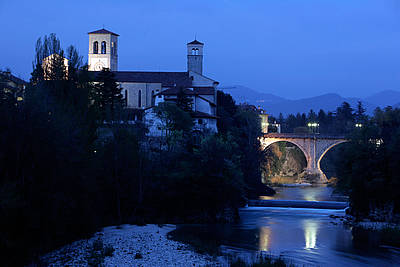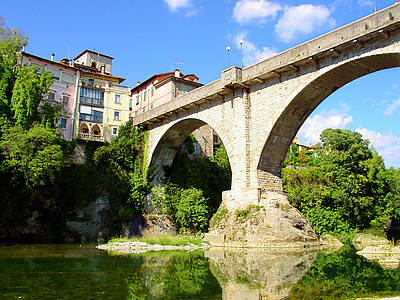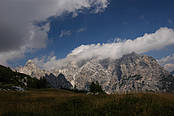Cividale
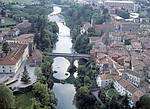
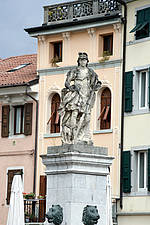
The view from the Devil’s Bridge is enchanting, as is the legend behind it: in exchange for his help in building the bridge, the Devil is said to have demanded the soul of its first user. The clever citizens of Cividale sent a dog across, thus saving a human soul. If the outlook from high on the bridge is breathtaking, the sight of it from below is no less a thrill.
Anyone curious enough to open an unremarkable door into the Celtic Hypogeum and descend a small set of stairs will suddenly be thrown into another world. Lying at the bottom of the steep steps is a room containing three mysterious masks carved in the walls, their meaning unknown to this day. Scholars also disagree on the purpose of the site...Celtic funerals?...a Roman prison?
Another building of simple construction, the Medieval House is also well worth a visit. It dates back to the 14th century, and its appearance has remained essentially unchanged to the present day. A destination of particular interest is the Basilica of Santa Maria Assunta, destroyed by an earthquake in 1448 and rebuilt in later ages. In its vast space the visitor cannot fail to be struck by the countless treasures that have been preserved, such as the magnificent silver altarpiece, a masterpiece of medieval goldsmith’s art, which belonged to Pellegrino II, Patriarch between 1195 and 1204.
Cividale is worth visiting just for a simple walk, so evocative and romantic are its streets. Why not pause to take in the view from an alternative vantage point, a belvedere along the river Natisone? Or linger for a while in the vast Paolo Diacono Square, ringed by buildings of various ages and styles? Why not stroll along Via Monastero Maggiore as far as the magnificent Renaissance entrance of the Monastery of Santa Maria in Valle, the site of a precious 19th century crib and richly endowed with history?
.
Cividale possesses remarkable monumental, artistic and cultural mementoes of its Longobard past. It was here that the centres of power coincided: the Gastaldaga, where the king’s possessions were administered, and the religious centre of the Episcopal Complex. Both these centres, the heart of Cividale in Longobard times, have preserved rich mementoes of that age. One constituent of the Gastaldaga was the Longobard Temple, or Oratory of Santa Maria in Valle, a building that is artistically and historically unique, wrapped in mystery, and still an object of study. In its prime it was adorned with marbles, mosaics on a gilt background, and a series of sculptures of female saints on three walls of the nave. The extraordinary beauty of its celebrated stucco work has been enchanting visitors for almost thirteen centuries.
The city has two museums that house relics of the Longobard era. The Cathedral’s Christian Museum contains some renowned sculptures, including the Ara di Ratchis and the Battistero di Callisto. The Cathedral treasure is well worth a visit, consisting of a precious collection of sacred objects, and so is the collection of paintings, which contains important works by Veronese and Pordenone. If Cividale resembles a piece of jewellery, then one of its most precious stones must be the National Archaeological Museum, housed in the Palazzo dei Provveditori Veneti. A few words cannot adequately describe its collections, which contain objects from the Roman, early Christian and early Medieval eras as well as others of more modern origin. Every opportunity should be taken to view the Longobard collection, which provides a rare insight into the workmanship, daily life and funerary practices of this ancient people.
